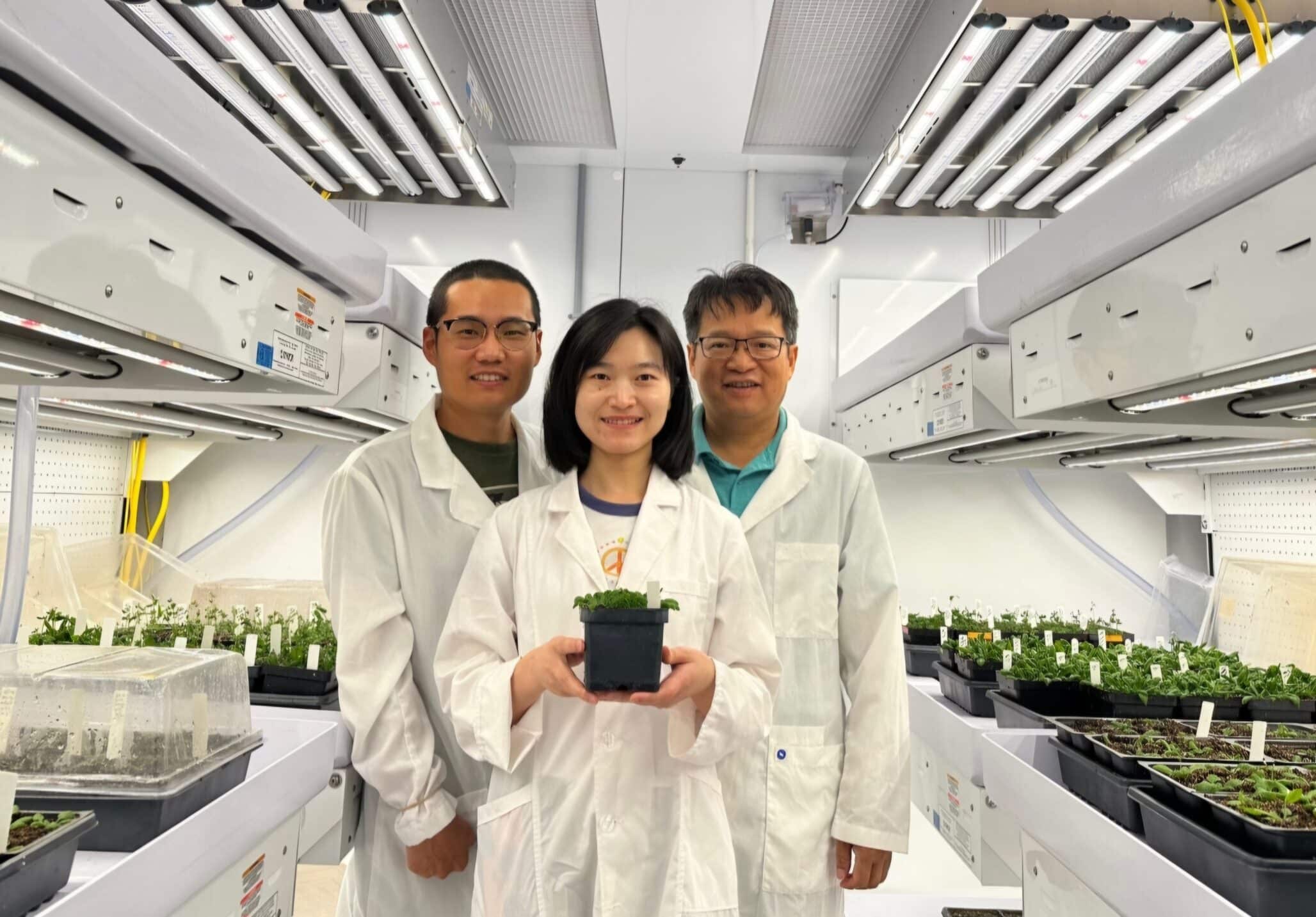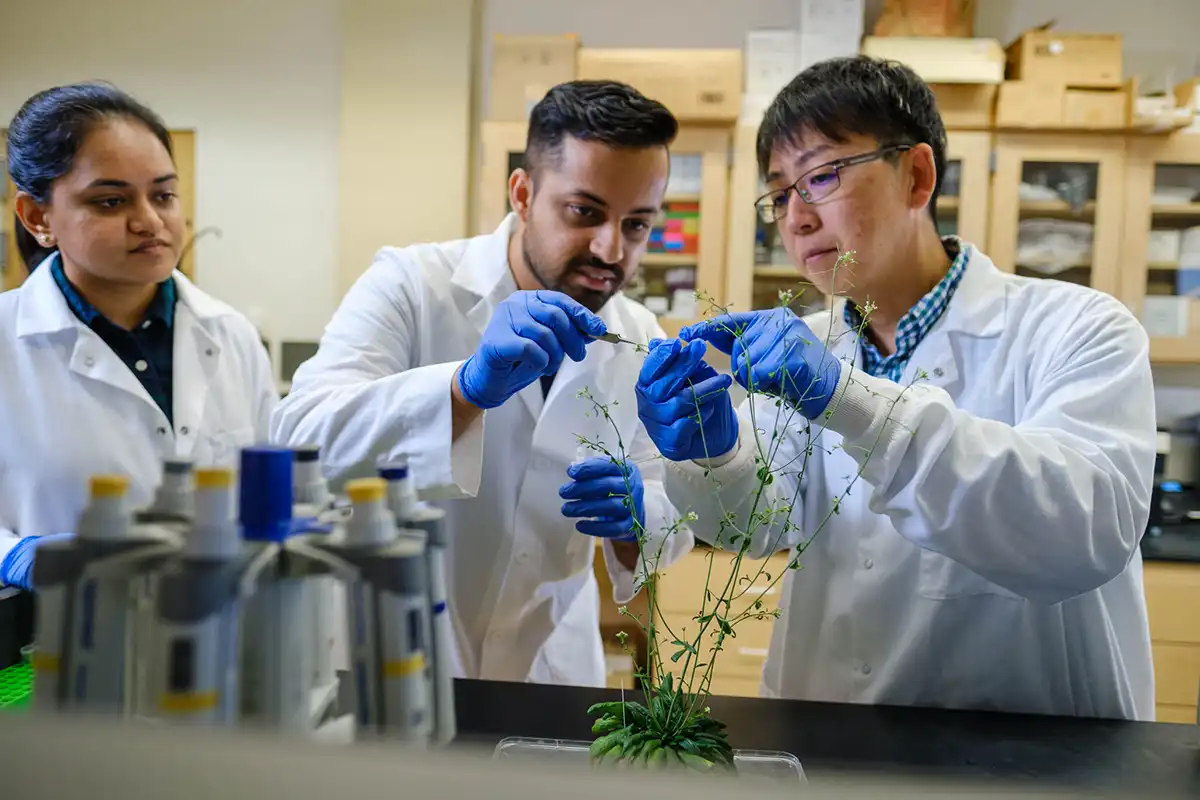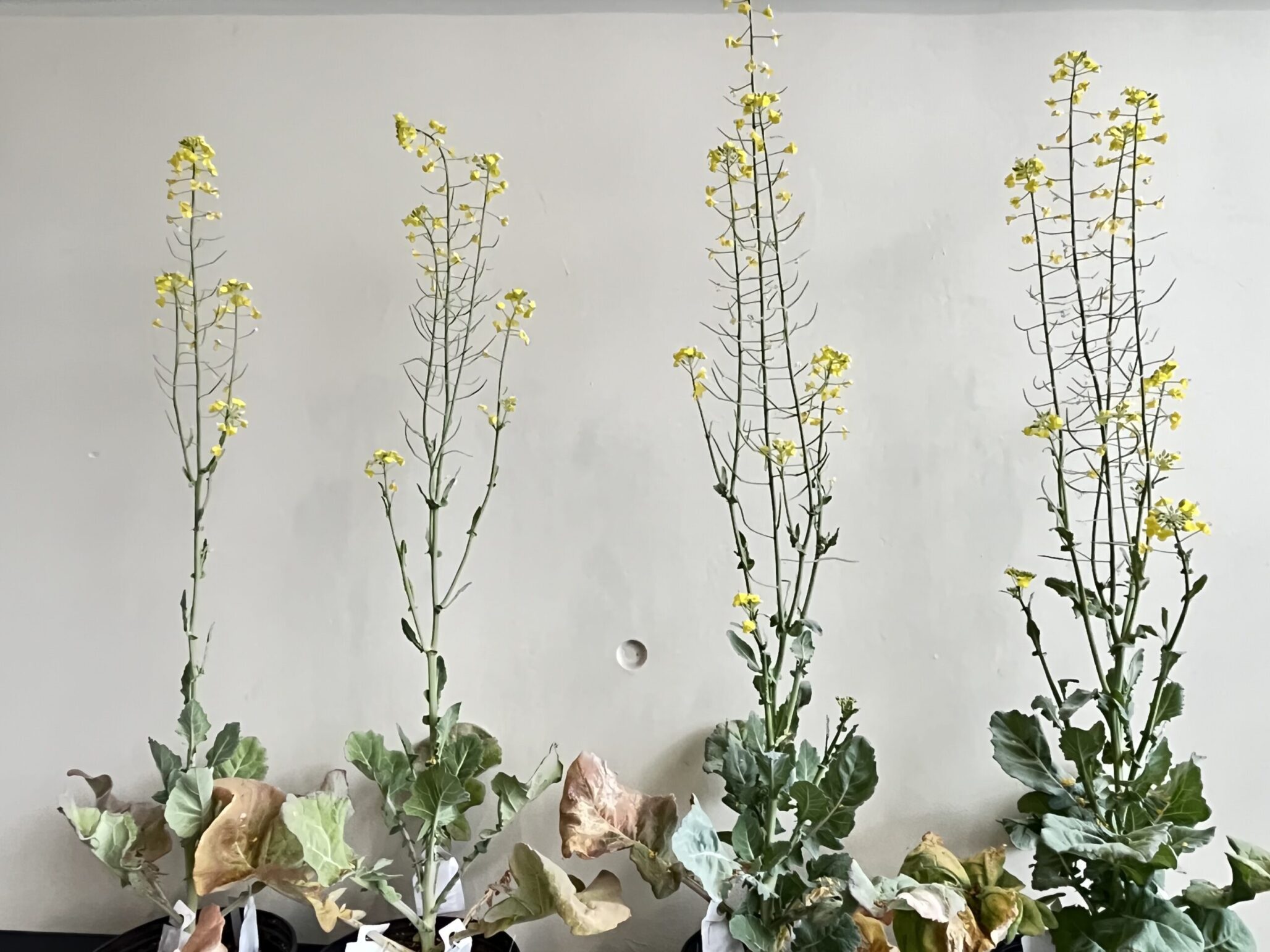Texas A&M scientists unveil unexpected complexities in plant microRNA production, challenging existing knowledge and opening new doors for crop innovation and improvement.
MicroRNAs can enhance plant resilience to drought, salinity, pathogens and more, according to a news release from Texas A&M. A recent study in Nature Plants by Texas A&M AgriLife Research scientists revealed the complexity of the processes plants use to produce them.
MicroRNAs, small molecules that guide proteins to decrease gene expression, can be engineered to target specific genes for crop improvement.
“Though these microRNA molecules are very tiny, their impacts are huge,” Xiuren Zhang said in the release. Zhang is a professor in the Texas A&M College of Agriculture and Life Sciences Department of Biochemistry and Biophysics, adjunct professor in the Texas A&M College of Arts and Sciences Department of Biology, and principal investigator of the study.
Changhao Li, Ph.D., and Xingxing Yan served as co-first authors of the study under Zhang’s supervision. Their work significantly revised the understanding of microRNA biogenesis in Arabidopsis thaliana. (Jiaying Zhu/Texas A&M AgriLife)
Using precise mutations and a clever experimental design, Texas A&M AgriLife researchers reevaluated the landscape of microRNAs in Arabidopsis thaliana and found that fewer than half were correctly identified as microRNAs, while the rest were miscategorized or need further investigation.
The study not only clarified genuine microRNA molecules in Arabidopsis thaliana but also provided an experimental design for similar analyses in other crops and animals. These discoveries also helped create updated guidelines for designing artificial microRNAs, opening the door to crop improvements in corn, wheat, soybeans, and rice.
Xingxing Yan, a graduate research assistant, and Changhao Li, Ph.D., a postdoctoral research associate, were co-first authors of the study, which was funded by the National Institutes of Health, National Science Foundation, and the Welch Foundation.
A Decade-Old Endeavor
MicroRNAs are uniformly 21 to 24 nucleotides long, but their plant precursors vary in shape and size. Zhang explained that the structural diversity of these precursors has made it challenging to determine the key features for their processing, leaving the generation of plant microRNAs largely unexplored.
About 10 years ago, Zhang’s lab identified a pattern between a loop on the precursor microRNA structure and the first cut site, which determines the first nucleotide on the mature microRNA molecule, an important factor for its correct cellular targeting.
Unfortunately, of the 326 posited microRNA precursors in Arabidopsis thaliana, only a few had the ideal reference loop according to computational models.
“The models are based on pure chemistry,” Zhang said. “They focus only on the free energy, on what should be the most stable form. But it couldn’t explain why so many diverse precursors can end up with products of the same size.”
Zhang’s lab aimed to verify the microRNA precursors within plants by finding the first cut sites and confirming their structural determinants within cells.
Unexpected Findings
The researchers made specific mutations to the dicer protein, responsible for making precise cuts to the microRNA precursor. Normally, the protein holds a double strand of precursor RNA and cuts at a site in each strand concurrently before releasing the RNA molecule.
“We made point mutations at two locations separately in the dicer-like protein to make them semi-active,” Yan said. “That way, they can only cut one strand and stop before further processing. This gives us a chance to capture the intermediate products of the microRNA precursor, telling us the initial processing sites and that first nucleotide.”
Their results showed that only 147 of the 326 posited microRNA precursors definitively interact with the dicer protein, marking them as genuine microRNA precursors. Eighty-one didn’t interact at all, suggesting they should be reclassified as a different type of RNA. Around 100 require further investigation.
Using an advanced high-throughput technique and a new computational method, the team mapped out the structures of microRNA precursors in their natural cell conditions. They found that about 95% of the structures of the 147 genuine microRNA molecules in cells differed from computer predictions.
“We found several results quite different from predictions and from the literature,” Li said. “We were able to combine biochemical results with next-generation sequencing to get more information, and now our understanding of the structures is much more accurate.”
The Future
The team still has more microRNA precursors to validate in Arabidopsis thaliana, but Zhang is eager to collaborate on investigating microRNA processing in agricultural crops for practical applications.
“We want to find out more about what kind of microRNAs are in other crops, how they’re processed, and how we can make artificial microRNAs in them,” he said. “This study provides resources that can be used widely, and now we can use it to revisit other crops, find what needs to be corrected, and see what else we can do with this tool.”












